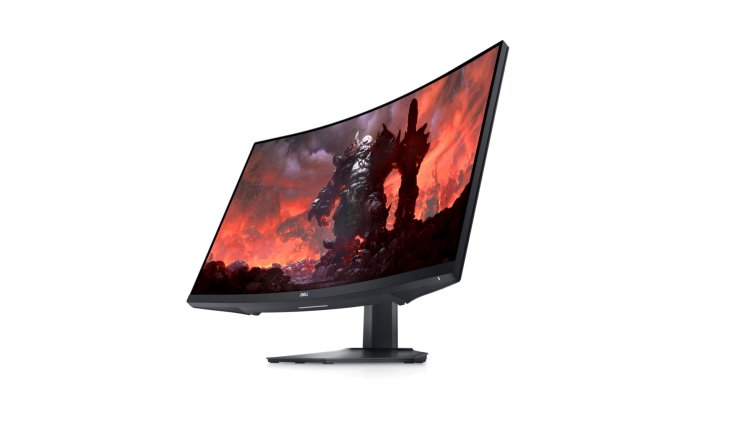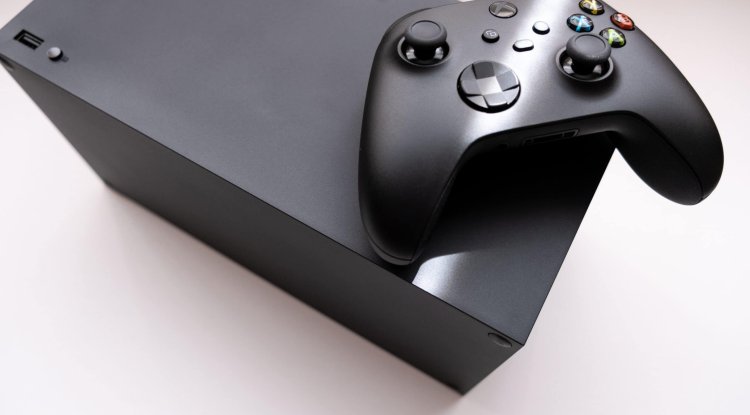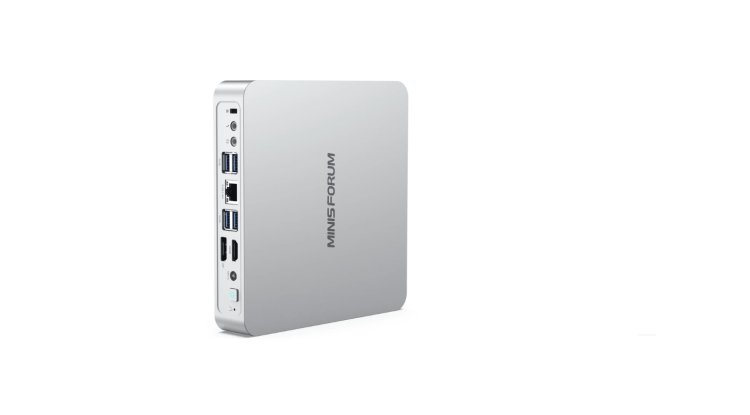Dell S3222DGM: Curved Gaming QHD Monitor

The curvature of the display panel and the blue illuminated bar at the bottom indicate that it is a player monitor. This is also confirmed by the refresh rate of 165 Hz, the latency of 1 ms, and support for AMD Free Sync technology.
To be precise, you get a refresh rate of 165-when connected to a computer via DisplayPort. The maximum refresh rate when connected via HDMI is 144 Hz. The upper and side frames are relatively thin, and the thicker lower frame has a stylish DELL logo.
The design of the back wall is important for the monitor because the potential visitor will see it first. The dominant design element is a trapezoid with a glossy frame and strips and also a hexagonal hole in the lower part of the leg for changing cables.
You can adjust the height of the display panel in the range of 100 mm and the tilt in the range of angles from -5 ° to 21 °. The base has an attractive irregular polygon shape. At dusk, it is highlighted by the aforementioned blue light, which, of course, you can turn off using the touch sensor.
The connectors are positioned so that the cables, including the power cord, are connected form below so that the back of the monitor can be close to the wall. Of course, it can be mounted with a VESA 100 × 100 mm mount.
At 32 ", the office monitor would have a better 4K resolution, but in this case, it is a middle-class gaming monitor, and with a QHD resolution of 2560 × 1440 pixels, a gaming laptop or gaming computer with a cheaper graphics card can handle display in native resolution.
The compromised monitor has only a slight curvature with a radius of 1800 mm, so it surrounds you and draws you into the game only symbolically, but such a slight curvature is not disturbing even during normal work. The user has two connectors HDMI, a DisplayPort connector, and a 3.5 mm audio jack, with HDMI and DisplayPort cable included.
The monitor's user interface is controlled by a joystick and four buttons located at the back on the right. The menu menus physically correspond to the location of the corresponding buttons, so you will quickly get used to the controls.
Depending on the type of current game, you can select one of the preset modes: FPS (First-Person Shooter), RPG (Role Playing Gamma), MOBA / RTS (Multiplayer Online Battle Arena / Real-Time Strategy), SPORTS, or you can configure according to your own preferences.
You can set various functions on the buttons according to your own preferences. The power button with a white LED is located on the bottom right. An interesting feature is the ability to display the current frame rate.





























